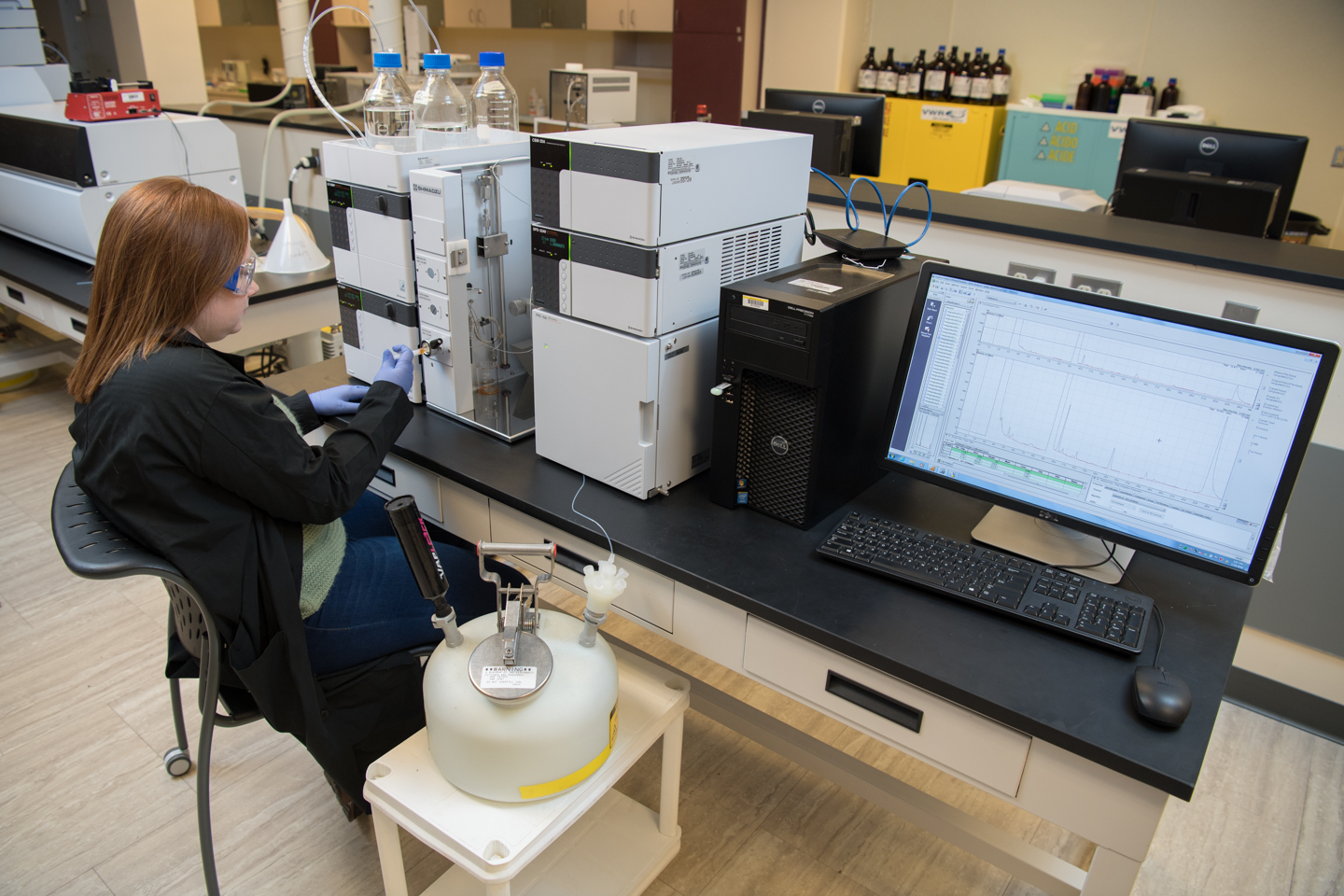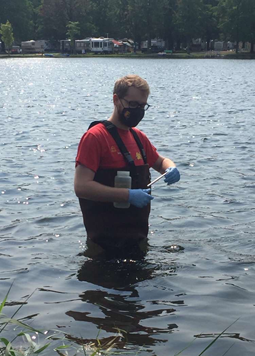April 23, 2024
Ferris State Students Involved in Research Indicating Waste from Wildlife Likely Source of Billings Lake E. coli Levels

Students from Ferris State University’s Shimadzu Core Laboratory for Academic and Research Excellence participated in research looking into the cause of Escherichia coli readings in a Wexford County recreation site.

Staff and students with Ferris State University’s Shimadzu Core Laboratory for Academic
and Research Excellence will present findings on E. coli contamination in Billings
Lake Wednesday, April 16 to the Manton City Council.
Escherichia coli, better known as E. coli, are a large and diverse group of bacteria. Although most strains of E. coli are harmless, the U.S. Centers for Disease Control and Prevention said some can cause diarrhea, urinary tract infections, respiratory illness and pneumonia, and other illnesses.
The Shimadzu Core Lab coordinated with Wexford County Drain Commissioner Michael Solomon since 2016, attempting to determine the source of fecal contaminants impacting access to Billings Lake’s “Kiddie Beach,” a body of water fed by Manton Creek.
Shimadzu Director Schuyler “Sky” Pike indicated there was no evidence of human or swine waste in samples taken following large rain events, with that testing pointing to E. coli contamination from canines, such as foxes and coyotes, ruminants such as or deer or other animals.
“The data showed conclusively that the fecal source was not from humans,” Pike said. “That is, the E. coli issue that closes ‘Kiddie Beach’ does not come about from leaky sewer or septic systems in that area. Additional studies to further reduce incidences of closure because of high E. coli levels will thus require the knowledge of wildlife experts and managers as well as further investigation with microbial source tracking methods to identify whether other livestock, such as cows, or wildlife are the fecal origin of the E. coli.”
Michigan Department of Environment, Great Lakes, and Energy funding supported polymerase chain reaction testing conducted by Ferris students connected with the Shimadzu Core Lab over a seven-year period.
That indicated the likely geographic origin of animal E. coli detected in 2022 and other years was near the headwaters of Manton Creek, several miles north-northwest of Billings Lake.

